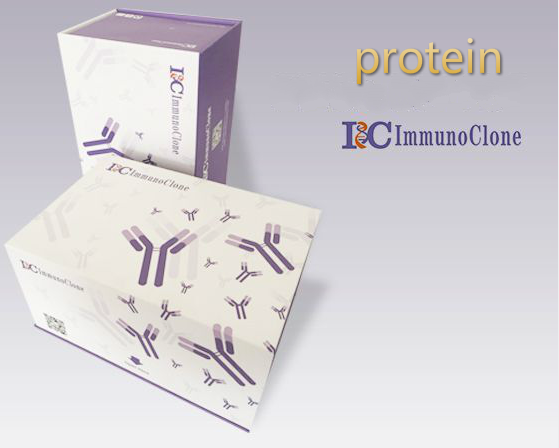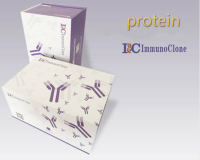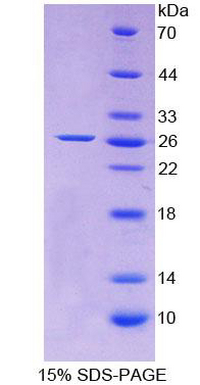

客服电话:021-61998208


载脂蛋白A5(APOA5)重组蛋白
载脂蛋白A5(APOA5)重组蛋白
Recombinant Apolipoprotein A5 (APOA5)
Apo-A5; APOA-V; APOAV; RAP3; Regeneration-associated protein 3
[ PROPERTIES ]
Residues: Gln169~Gly367
Tags: N-terminal His-Tag
Accession: Q9QUH3
Host: E. coli
Purity: >95%
Endotoxin Level: <1.0EU per 1μg
(determined by the LAL method).
Formulation: Supplied as lyophilized form in 20mM Tris,
500mM NaCl, pH8.0, containing 1mM EDTA, 1mM DTT,
0.01% sarcosyl, 5% trehalose, and preservative.
Predicted isoelectric point: 6.2
Predicted Molecular Mass: 24.0kDa
Accurate Molecular Mass: 27kDa as determined by SDS-PAGE reducing conditions.
Applications: SDS-PAGE; WB; ELISA; IP.
(May be suitable for use in other assays to be determined by the end user.)
Note: The possible reasons that the actual band size differs from the predicted are as follows:
1. Splice variants: Alternative splicing may create different sized proteins from the same gene.
2. Relative charge: The composition of amino acids may affects the charge of the protein.
3. Post-translational modification: Phosphorylation, glycosylation, methylation etc.
4. Post-translation cleavage: Many proteins are synthesized as pro-proteins, and then cleaved to
give the active form.
5. Polymerization of the target protein: Dimerization, multimerization etc.
[ USAGE ]
Reconstitute in ddH2O.
[ STORAGE AND STABILITY ]
Storage: Avoid repeated freeze/thaw cycles.
Store at 2-8oC for one month.
Aliquot and store at -80oC for 12 months.
Stability Test: The thermal stability is described by the loss rate of the targetprotein. The loss rate was determined by accelerated thermal degradation test,
that is, incubate the protein at 37oC for 48h, and no obvious degradation andprecipitation were observed. (Referring from China Biological Products Standard,which was calculated by the Arrhenius equation.) The loss of this protein is lessthan 5% within the expiration date under appropriate storage condition.
[ SEQUENCES ]
The sequence of the target protein is listed below.
QD MQS RVLHHTD RVKELF HPYA ER LVTGIGHH VQELHRSVAP HAVASPAR LSRCVQTLSHKL TRKAKDLHTS IQRNLDQLRD ELSTFIRVST DGADNRDSLD PQALSDEVRQRLQAFRHDTY LQIAAFTQAI DQETEEIQHQ LAPPPPSHSA FAPELGHSDS NKALSRLQSRLDDLWEDIAY GLHDQGHSQN NPEGHSG
[ REFERENCES ]
1. van Der Vliet H.N., et al. (2001) J. Biol. Chem. 276:44512-44520.
2. Dorfmeister B., et al. (2006) Diabetologia 49:1324-1332.
3. Shu X., et al. (2008) J. Lipid Res. 49:1670-1676.
4. Helleboid-Chapman A., et al. (2009) Cell. Physiol. Biochem. 24:451-460.
特别提示:本公司的所有产品仅可用于科研实验,严禁用于临床医疗及其他非科研用途!








